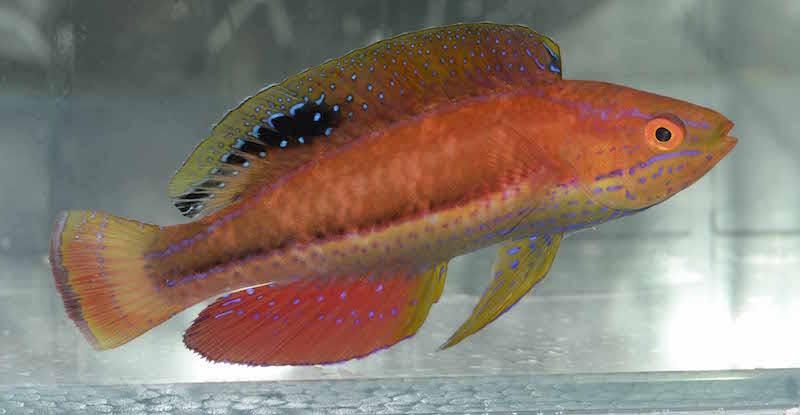The reefs of Japan are known to harbour unique fauna found nowhere else on this earth. Rife with endemics, species such as Centropyge interrupta, Chaetodon daedalma, Genicanthus takeuchii, Chromis mirationis and a whole hodgepodge of other reef fish call this place home.
Cirrhilabrus is not left out, and two of the fifty or so species are restricted chiefly within the Japanese peninsular. Or are they really? The revelation of Cirrhilabrus katoi in Cagayan, Philippines, calls into question if Japan is indeed housing any real endemics.

Cirrhilabrus katoi and C. lanceolatus are two species known primarily within the confines of Southern Japan. In the ethereally beautiful C. katoi, males are strawberry red, lightening to a yellowish ventral region. A horizontal lateral stripe connects the base of the pectoral fin to the caudal peduncle, and a stripe of a much shorter length runs parallel along the posterior dorsum. The face and rest of the body are adorned with shorter stripes and spots. Both dorsal and anal fins are red, but on the former, a series of cryptic scrawling in celestial greens and blues adorn its entirety. A black blotch loosely defined by a circumference of broken dots sits on the posterior soft portion of the dorsal fin.

The caudal fin is yellow, slated in an emerald green sheen at various angles of incidence. The caudal fin margin is edged in a highly chatoyant purple-green, which scintillates according to the amount of available light. Its ventral fins are long but never trailing, and reaches past the point of anal fin origin. Cirrhilabrus katoi is exceedingly rare in the trade, and the availability of this species from the Philippines serves as a much needed thirst quencher for the ever thirsty wrasse aficionados. It was previously known in the trade via a single male and female, all within the confines of Japan. Secondly, this is the first record of the species breaking out of its previously known endemism, and is thus recognised as a geographical range extension.

The appearance of Cirrhilabrus katoi in the northern coast of Philippines coincides with the spillover of the “pintail” wrasse from Japan. Cirrhilabrus lunatus is replaced by the very similar Cirrhilabrus cf. lunatus, and the gap between the two land masses is further bridged by the presence of Cirrhilabrus lubbocki, C. melanomarginatus, C. cyanopleura, C. ryukyuensis, C. exquisitus, C. rubrimarginatus and C. temminckii. Based on the biogeography of these species, it appears that there is very little preventing the crossover between these two regions. With C. katoi no longer being endemic to Japan, that leaves Cirrhilabrus lanceolatus the only member left that is considered to be “endemic”.

A greater look at C. katoi and its relationship in the genus will be covered in our on-going Cirrhilabrus review. For more information on the various other members, the articles covering the lubbocki, lunatus, lanceolatus, bathyphilus, scottorum and cyanopleura groups are completed.



